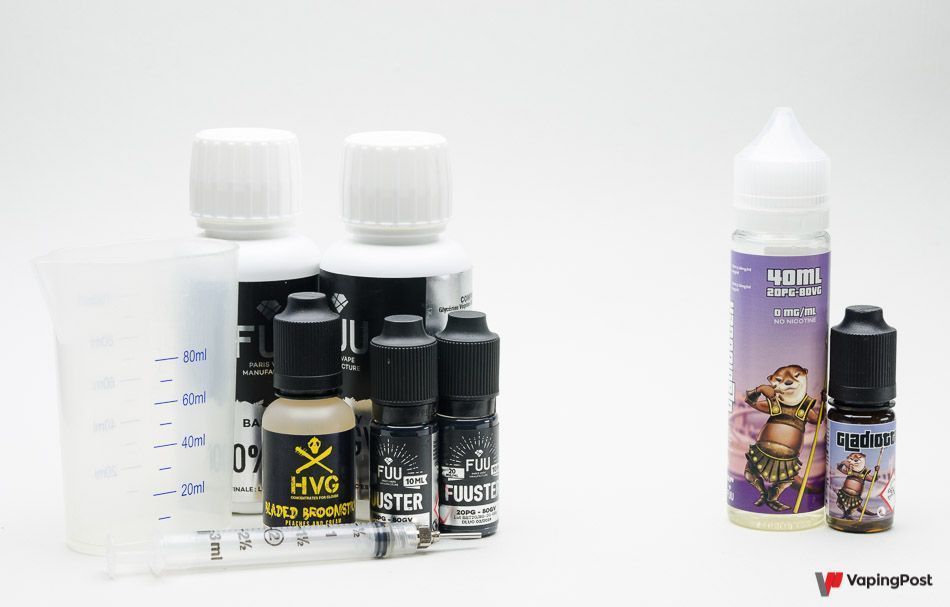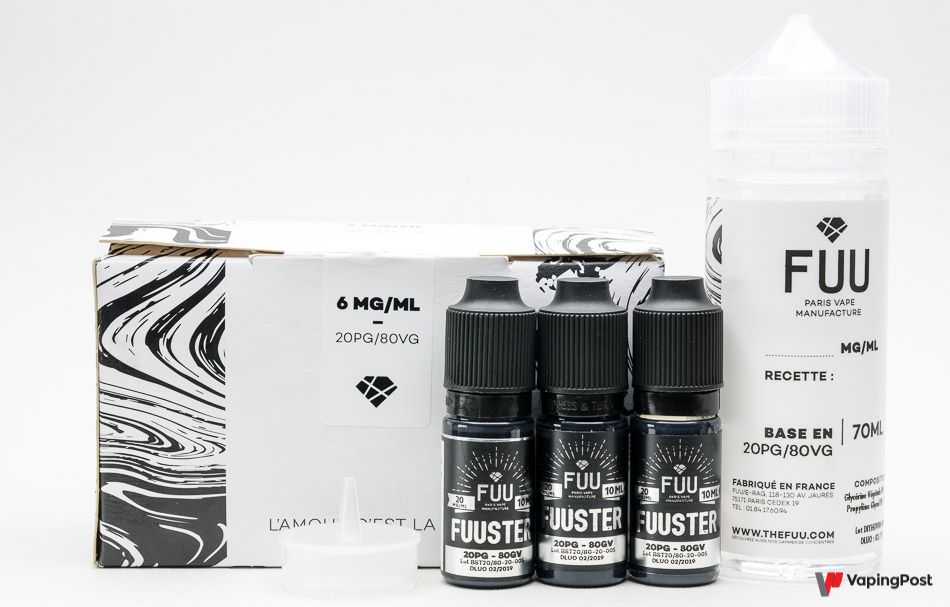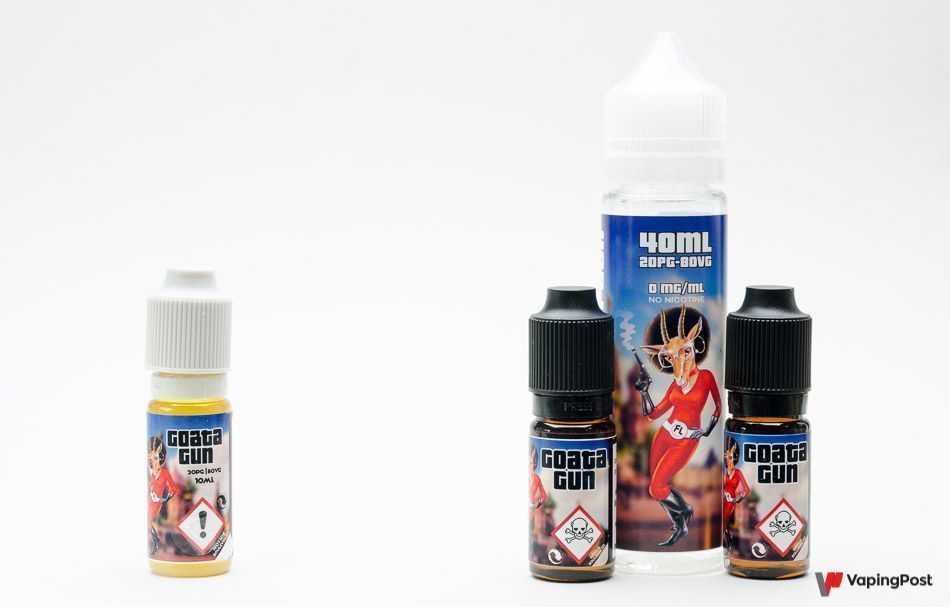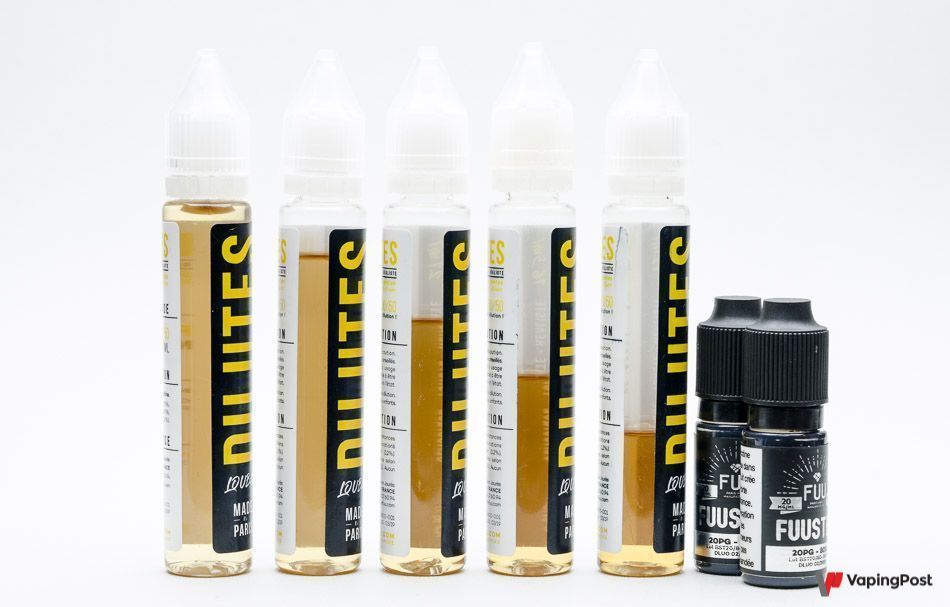Ready-to-use packs
Making your own DIY e-liquid is not that complicated, but packs are now available that make producing your own liquids even easier. We offer you an overview of the solutions currently available on the market.
Making your own DIY e-liquid is not that complicated, but packs are now available that make producing your own liquids even easier. We offer you an overview of the solutions currently available on the market.
 DIY liquids were around well before the TPD, and were already a much less expensive alternative to ready-to-vape liquids. Paradoxically, this European Directive gave the DIY market a boost, by prohibiting bottles of over 10 ml for liquids containing nicotine. The market for 30 or 60 ml e-liquid bottles containing nicotine disappeared, making way for DIY alternatives.
DIY liquids were around well before the TPD, and were already a much less expensive alternative to ready-to-vape liquids. Paradoxically, this European Directive gave the DIY market a boost, by prohibiting bottles of over 10 ml for liquids containing nicotine. The market for 30 or 60 ml e-liquid bottles containing nicotine disappeared, making way for DIY alternatives.
As we have seen in the other articles on DIY liquids, it is quite easy to make your own liquid. However, it still is necessarily more time-consuming and labour-intensive than buying a bottle directly, and manufacturers are getting very creative in their endeavours to reduce the gap between the two, especially given the rapid growth in this market.
Due to the ban on the sale of liquids containing nicotine in units of more than 10 ml, it will always be necessary to make mixtures to reach 30 or 100 ml of juice containing more than 0 mg/ml. On the other hand, the dosages can be used to gain in simplicity and speed.
 Unless boosters are considered as bases, which only applies those who vape at nicotine contents of 20 mg/ml, all bases are sold without nicotine. Obviously, you can make your own base by mixing the right proportions of propylene glycol and vegetable glycerin, but ready-to-use bases are available to spare us this effort. You can buy 1 or 5 litres of your favourite base directly, requiring no particular effort.
Unless boosters are considered as bases, which only applies those who vape at nicotine contents of 20 mg/ml, all bases are sold without nicotine. Obviously, you can make your own base by mixing the right proportions of propylene glycol and vegetable glycerin, but ready-to-use bases are available to spare us this effort. You can buy 1 or 5 litres of your favourite base directly, requiring no particular effort.
You simply have to measure the nicotine dosage, if you don’t vape without it, of course. It’s not complicated, as seen in the article on this topic, but the process can be made even simpler with pre-measured bases. They consist of a pack containing a partially filled 100 ml of base and one or more boosters. The packs are sold to produce a base with a defined nicotine content. The higher the final content, the more boosters are included, and the lower the non-nicotine base content in the bottle. They are available in most PG/VG ratios.
Simply add the boosters provided to the base in the bottle, shake well, and you have a base with the right nicotine content without having to get the proportions right. These kits are not available in very large formats, but they are a simple solution to make 100 ml of base with a standard nicotine content.
 The principle consists of selling nicotine-free liquid in a large format, on one hand, and, on the other, 10 ml bottles of the same liquid containing 20 mg/ml of nicotine, the maximum allowed in terms of capacity and dosage by the TPD.
The principle consists of selling nicotine-free liquid in a large format, on one hand, and, on the other, 10 ml bottles of the same liquid containing 20 mg/ml of nicotine, the maximum allowed in terms of capacity and dosage by the TPD.
Simply mix both in the right proportions to obtain the desired nicotine content. The process is straightforward, but you still need to get the base/booster proportions right. The principle is actually the same as that used to obtain intermediate contents with ready-to-vape liquids: mix one bottle containing 6 mg/ml with one containing 3 mg/ml to obtain 4.5 mg/ml. In this case, to benefit from the attractive prices of DIY liquids, you follow the same procedure but with larger capacities and using 20 mg/ml for the nicotine part.
To make it easier to mix, some manufacturers sell 100 ml bottles partially filled with nicotine-free liquid, to which you simply need to add one booster to achieve 3 mg/ml and two to obtain 6 mg/ml. In these formulas, the boosters are liquids with contents of 18 or 20 mg/ml, rather than boosters per se as they are not merely a nicotine base. The flavours are in both components in the right proportions, they are only mixed to dose the nicotine, unlike ready-to-use liquids.
 The capacity restrictions of the TPD only apply to liquids containing nicotine. Therefore, it is still possible to sell liquids in formats of 30 ml or more provided that they are nicotine-free. The DIY solution allows you to add nicotine using boosters, and is relatively straightforward, and most liquid manufacturers offer it in one way or another.
The capacity restrictions of the TPD only apply to liquids containing nicotine. Therefore, it is still possible to sell liquids in formats of 30 ml or more provided that they are nicotine-free. The DIY solution allows you to add nicotine using boosters, and is relatively straightforward, and most liquid manufacturers offer it in one way or another.
As such, you can get bottles of liquid concentrate, in which the flavours are over-concentrated. For example, 20 ml of liquid concentrate in a 30 ml bottle. Simply add 10 ml of a neutral booster to obtain the right flavour concentration from the base supplied by the booster, and the nicotine content increases with the 20 mg/ml content of the booster.  The principle is the same regardless of the nicotine dosage. The bottle is sold filled to a certain level depending on the desired nicotine content. Simply add booster to a mark to obtain the nicotine content indicated on the label. No dosage is needed – this is the DIY process in its simplest form, bottles are sold according to defined nicotine content and any booster can be used.
The principle is the same regardless of the nicotine dosage. The bottle is sold filled to a certain level depending on the desired nicotine content. Simply add booster to a mark to obtain the nicotine content indicated on the label. No dosage is needed – this is the DIY process in its simplest form, bottles are sold according to defined nicotine content and any booster can be used.
The basic DIY process retains an advantage with the option to produce any quantity of liquid directly, with an even more attractive cost, but ready-to-use DIY liquids are undeniably more straightforward and accessible to everyone, and ultimately not much more complicated than the good old 30 or 60 ml bottles containing nicotine of the pre-TPD era.
We have prepared a series of articles examining DIY liquids: